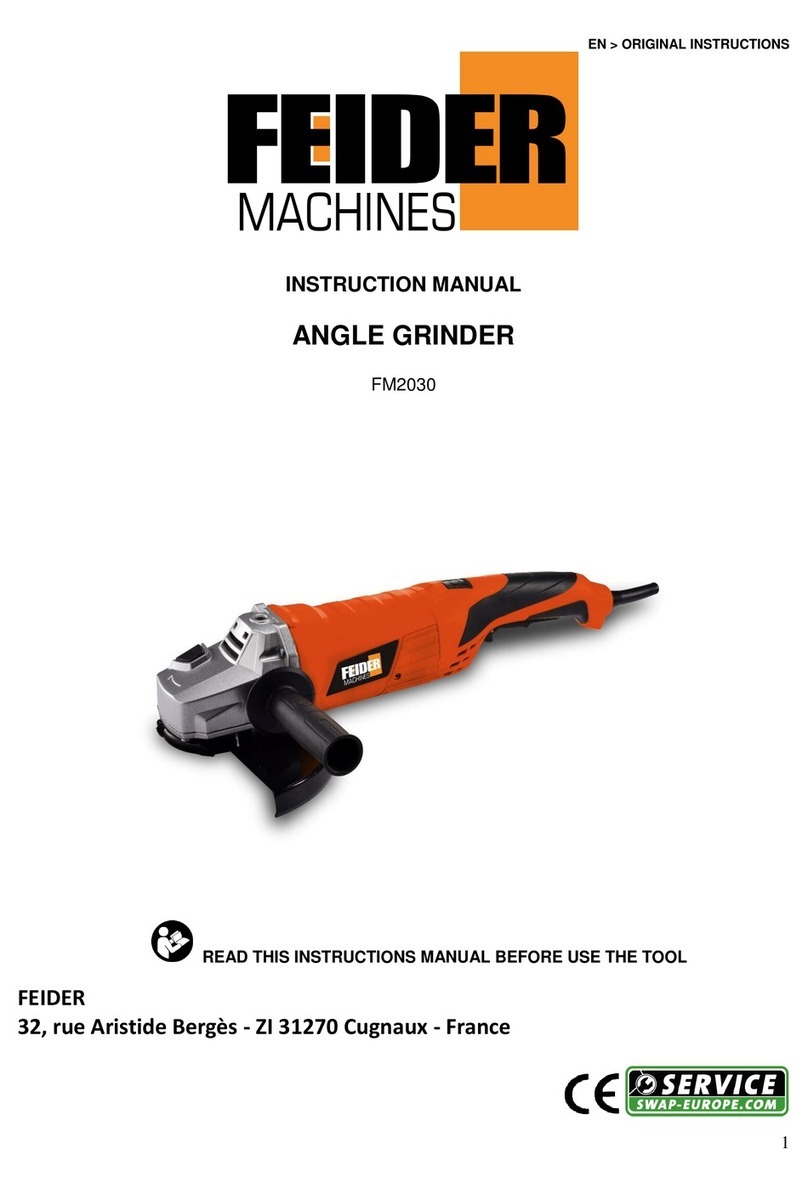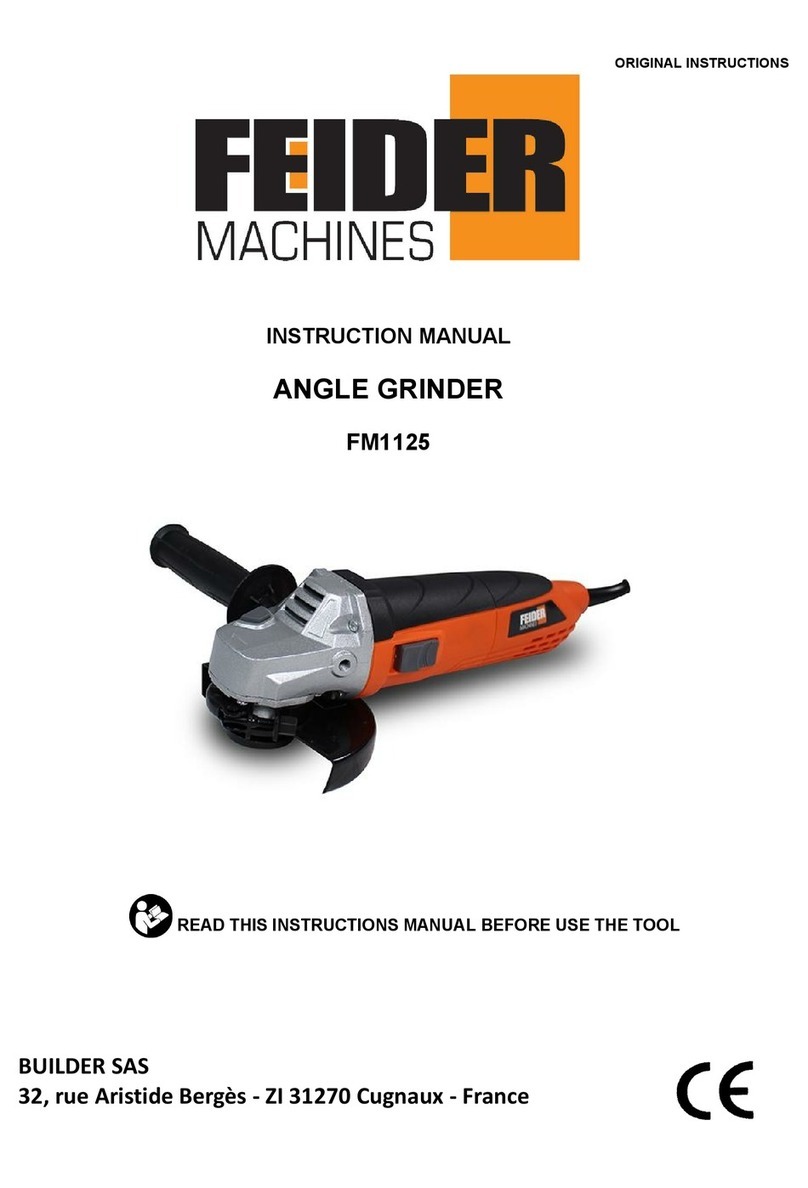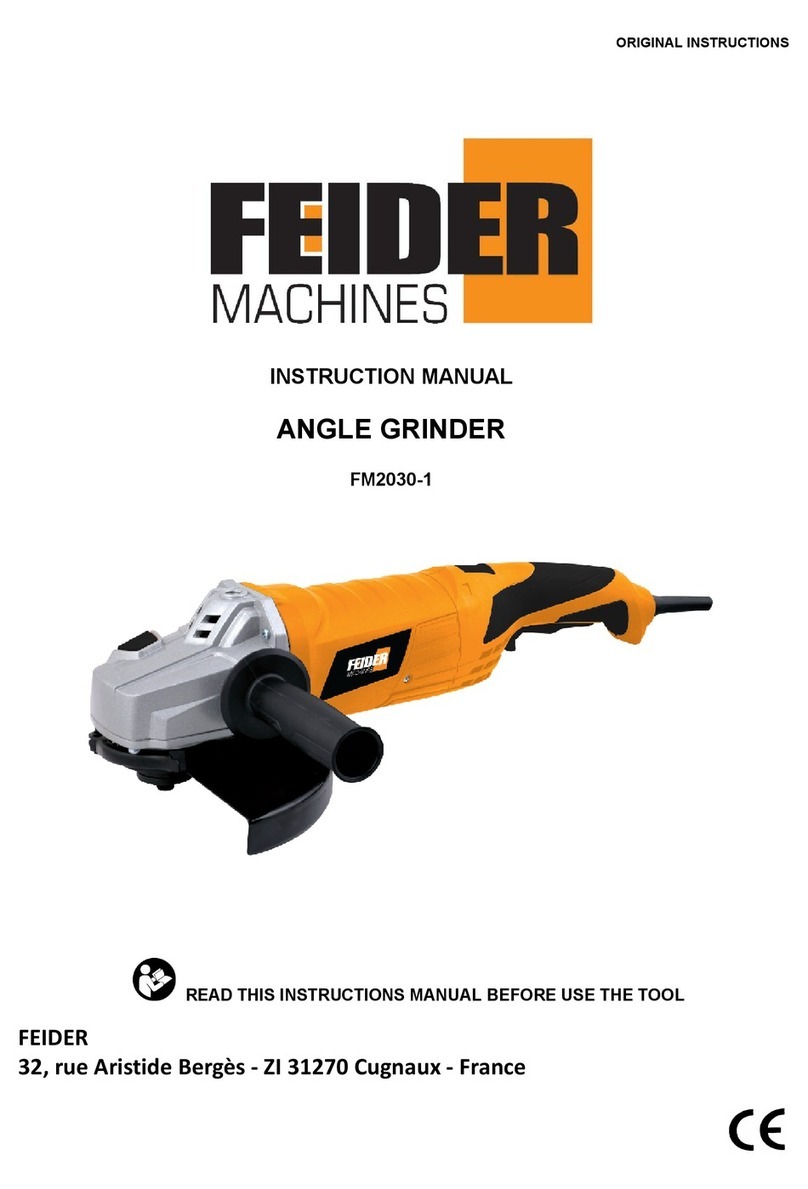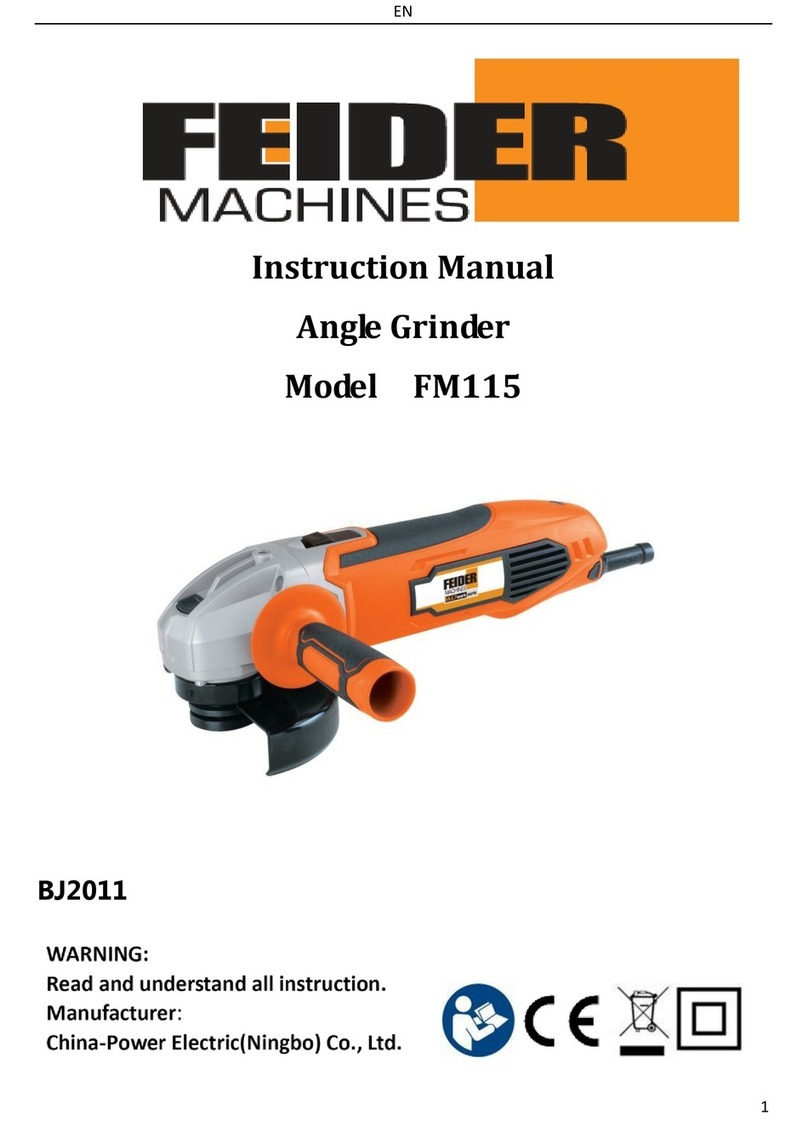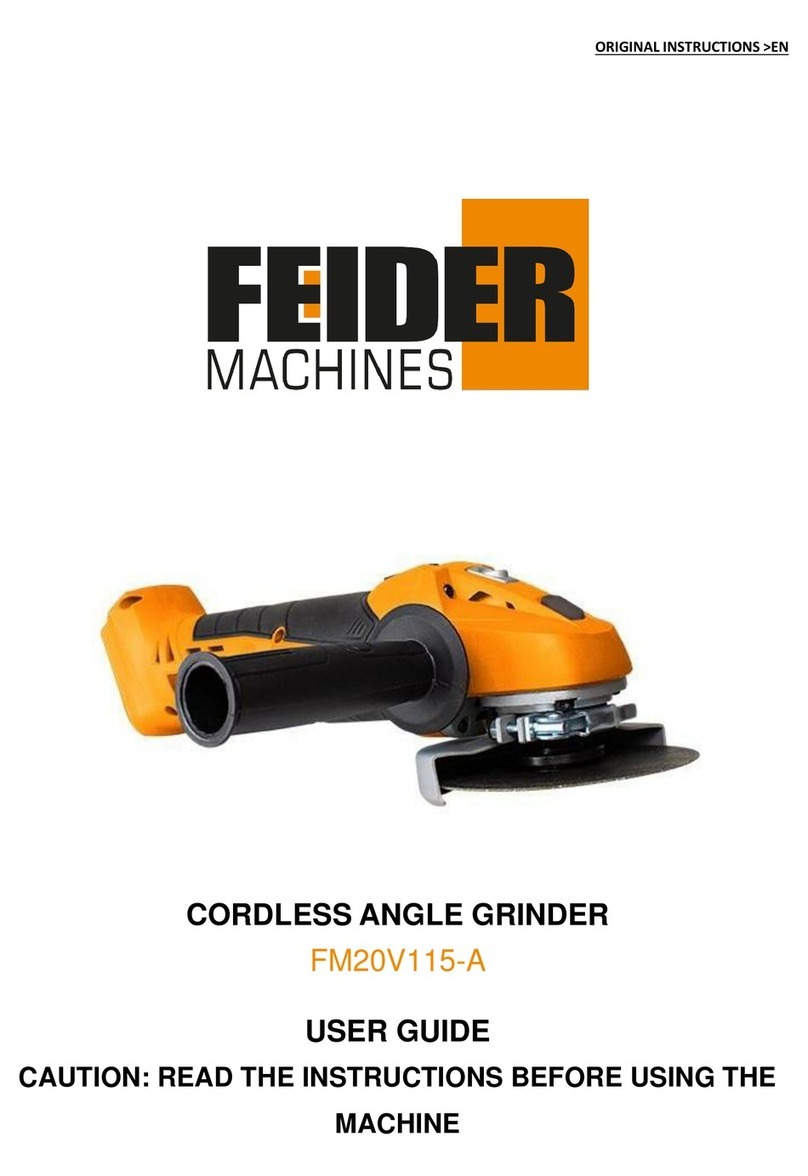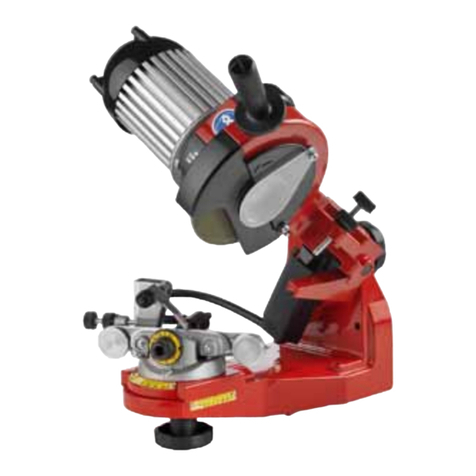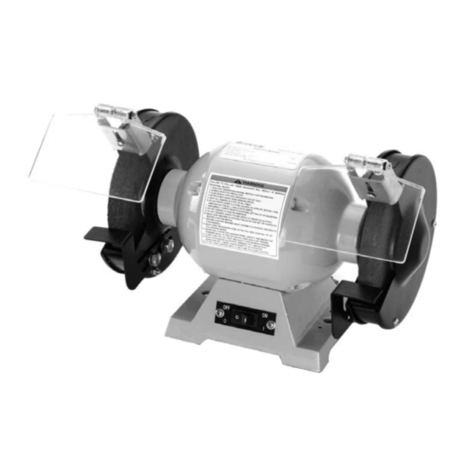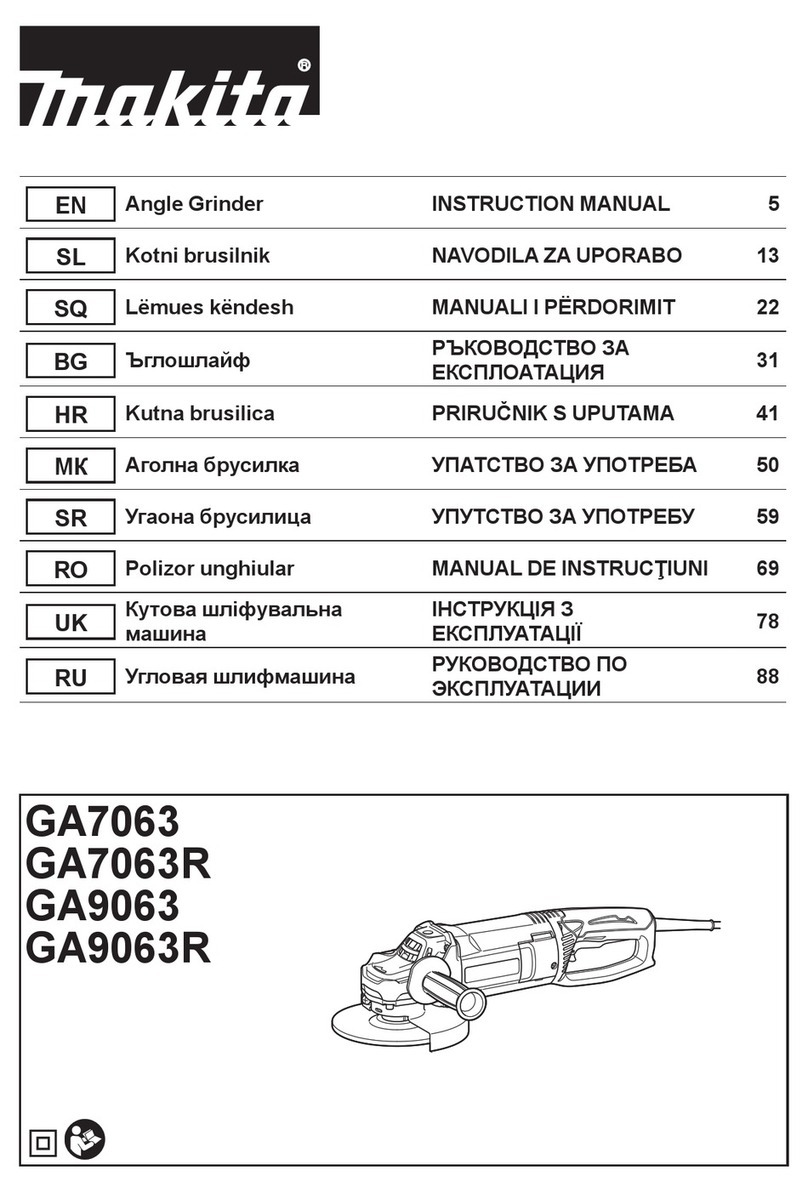Feider Machines FMDP User manual

ORIGINAL INSTRUCTIONS
Instruction manual
Air Die Grinder
FMDP
WARNING: READ THE FOLLOWING INSTRUCTIONS BEFORE USE THIS TOOL.
BUILDER SAS
32, rue Aristide Bergès - ZI 31270 Cugnaux – France
MADE IN PRC

ORIGINAL INSTRUCTIONS
1. General safety rules
Read and understand the safety instructions before installing, operating, repairing, maintaining, changing accessories
on, or working near the die grinder. Failure to do so can result in serious bodily injury.
- Only qualified and trained operators should install, adjust or use the die grinder.
- Do not modify this die grinder. Modifications can reduce the effectiveness of safety measures and increase
the risks to the operator.
- Do not discard the safety instructions; give them to the operator.
- Do not use the die grinder if it has been damaged.
- Tools shall be inspected periodically to verify that the ratings and markings required by this part of ISO 11148
are legibly marked on the tool. The employer/user shall contact the manufacturer to obtain replacement marking labels
when necessary.
Projectile hazards
-Be aware that failure of the workpiece or accessories, or even of the inserted tool itself can generate
high-velocity projectiles.
- Always wear impact-resistant eye protection during operation of the die grinder or when changing accessories
on the tool. The grade of protection required should be assessed for each use.
- Ensure that the workpiece is securely fixed.
- Check regularly that the speed of the die grinder is not higher than that marked on it. These speed checks
shall be carried out without the abrasive product mounted and in accordance with the instructions given by the
manufacturer.
- Ensure that sparks and debris resulting from use do not create a hazard.
- Disconnect the grinder from the energy supply before changing abrasive product and servicing.
- The risks to others should also be assessed at this time.
Entanglement hazards -Choking, scalping and/or lacerations can occur if loose clothing, personal jewellery, neck
wear, hair or gloves are not kept away from the tool and accessories.
Operating hazards
-Avoid contact with the rotating spindle and inserted tool to prevent cutting of hands and other body parts.
- Use of the tool can expose the operator's hands to hazards, including cuts and abrasions and heat. Wear
suitable gloves to protect hands.
- Operators and maintenance personnel shall be physically able to handle the bulk, weight and power of the
tool.
- Hold the tool correctly; be ready to counteract normal or sudden movements and have both hands available.
- Maintain a balanced body position and secure footing.
- Release the start-and-stop device in the case of an interruption of the energy supply.
- Use only lubricants recommended by the manufacturer.
- Personal protective safety glasses shall be used; suitable gloves and protective clothing are
recommended.
- A rotary file shall not be operated at a speed exceeding the rated speed.
- For overhead work, wear a safety helmet.
- Be aware that there is a running-on of the rotary inserted tool after the start-and-stop device has been
released.
- Warnings shall be given against the risk of explosion or fire due to the material being processed.
Repetitive motions hazards
-When using a die grinder to perform work-related activities, the operator can experience discomfort in the
hands, arms, shoulders, neck or other parts of the body.
- While using a die grinder, the operator should adopt a comfortable posture whilst maintaining a secure footing
and avoiding awkward or off-balance postures. The operator should change posture during extended tasks; this can
help avoid discomfort and fatigue.
- If the operator experiences symptoms such as persistent or recurring discomfort, pain, throbbing, aching,
tingling, numbness, burning sensations or stiffness, these warning signs should not be ignored. The operator should tell
the employer and consult a qualified health professional.
Accessory hazards
-Disconnect the die grinder from the energy supply before fitting or changing the inserted tool or accessory.
- Use only sizes and types of accessories and consumables that are recommended by the die grinder
manufacturer; do not use other types or sizes of accessories or consumables.

ORIGINAL INSTRUCTIONS
- Avoid direct contact with the inserted tool during and after use as it can be hot or sharp.
- The maximum operating speed of the inserted tool shall equal or exceed the rated speed marked on the tool.
- Never mount a grinding wheel, cut-off wheel or router cutter on a die grinder. A grinding wheel that bursts can
cause very serious injury or death.
- Do not use mounted wheels which are chipped or cracked or which could have been dropped.
- Use only permitted inserted tools of the correct shaft diameter.
- Pay attention to the fact that the permitted speed of the mounted point has to be lowered due to the increase
of the length of the shaft between the end of the collet and the mounted point (overhang). Make sure that the minimum
gripping length of 10 mm is observed (see Figure 1 and the recommendations of the manufacturer of mounted points).
- Be aware of the risk of mismatching the diameter of the shaft of the mounted point and that of the collet.
Workplace hazards
-Slips, trips and falls are major causes of workplace injury. Be aware of slippery surfaces caused by use of the tool
and also of trip hazards caused by the air line or hydraulic hose.
- Proceed with care in unfamiliar surroundings. There can be hidden hazards, such as electricity or other utility
lines.
- The die grinder is not intended for use in potentially explosive atmospheres and is not insulated against
contact with electric power.
- Ensure that there are no electrical cables, gas pipes, etc., which can cause a hazard if damaged by use of the
tool.
Dust and fume hazards
-Dust and fumes generated when using die grinders can cause ill health (for example cancer, birth defects,
asthma and/or dermatitis); risk assessment and implementation of appropriate controls for these hazards are essential.
- Risk assessment should include dust created by the use of the tool and the potential for disturbing existing
dust. -Operate and maintain the die grinder as recommended in these instructions, to minimize dust or fume emissions.
- Direct the exhaust so as to minimize disturbance of dust in a dust-filled environment.
- Where dust or fumes are created, the priority shall be to control them at the point of emission.
- All integral features or accessories for the collection, extraction or suppression of airborne dust or fumes
should be correctly used and maintained in accordance with the manufacturer's instructions.
- Select, maintain and replace the consumable/inserted tool as recommended in the instructions, to prevent an
unnecessary increase in dust or fumes.
- Use respiratory protection in accordance with the employer's instructions and as required by occupational
health and safety regulations.
- Working in certain materials creates emission of dust and fumes, causing a potentially explosive environment.
Noise hazards
-Exposure to high noise levels can cause permanent, disabling hearing loss and other problems, such as
tinnitus (ringing, buzzing, whistling or humming in the ears). Therefore, risk assessment and implementation of
appropriate controls for these hazards are essential.
- Appropriate controls to reduce the risk may include actions such as damping materials to prevent work pieces
from “ringing”.
- Use hearing protection in accordance with employer's instructions and as required by occupational health and
safety regulations.
- Operate and maintain the die grinder as recommended in the instruction handbook, to prevent an
unnecessary increase in the noise level.
- Select, maintain and replace the consumable/inserted tool as recommended in the instruction handbook, to
prevent an unnecessary increase in noise.
- If the die grinder has a silencer, always ensure that it is in place and in good working order when the die
grinder is being operated.
Vibration hazards
-Exposure to vibration can cause disabling damage to the nerves and blood supply of the hands and arms.
- Wear warm clothing when working in cold conditions and keep your hands warm and dry.
- If you experience numbness, tingling, pain or whitening of the skin in your fingers or hands, stop using the die
grinder, tell your employer and consult a physician.
- Operate and maintain the die grinder as recommended in the instruction handbook, to prevent an
unnecessary increase in vibration levels.
- Select, maintain and replace the consumable/inserted tool as recommended in the instruction handbook, to
prevent an unnecessary increase in vibration levels.
- Support the weight of the tool in a stand, tensioner or balancer if possible.

ORIGINAL INSTRUCTIONS
- Hold the tool with a light but safe grip, taking account of the required hand reaction forces, because the risk
from vibration is generally greater when the grip force is higher.
- An improperly mounted or damaged inserted tool can cause excessive vibration levels.
Additional safety instructions for pneumatic power tools
-Air under pressure can cause severe injury:
- always shut off air supply, drain hose of air pressure and disconnect tool from air supply when not in
use, before changing accessories or when making repairs; -never direct air at yourself or anyone else.
- Whipping hoses can cause severe injury. Always check for damaged or loose hoses and fittings.
- Whenever universal twist couplings (claw couplings) are used, lock pins shall be installed and whipcheck
safety cables shall be used to safeguard against possible hose-to-tool connection failure.
- Do not exceed the maximum air pressure stated on the tool.
- Never carry an air tool by the hose.
2. Important Safety Rules
1) When grinding always wear safety goggles ,an appropriate face mask or respiratory equipment.
2) Always ensure machine is switched off before connecting to air supply.
3) Disconnect any machine from the air supply before changing accessories and before servicing any type
of machine.
4) Always keep your air tool clean and lubricated. Daily lubrication is essential to avoid internal corrosion
and possible failure.
5) Do not wear watches, rings bracelets or loose clothing when using air tools.
6) Using only light weight coil hoses from a tool to the wall or compressor coupling.
7) Do not overload the machine. Allow the tool to operate at its optimum speed for maximum efficiency.
8) Do not increase the air pressure above the manufacturers recommended level, as excessive overload
can cause the machine casing to split. Also this creates excessive wear on moving parts and possible
failure.
9) In the interests of safety and possible damage to the machine/operator, always ensure that the machine
has stopped before putting it down after use.
10) Always ensure that the work piece is firmly secured leaving both hands free to control the machine.
11) Always ensure that the accessories are rated/designed for use with the machine. Also correctly and
securely fastened before connecting the machine to the air supply.
12) When grinding always wear an appropriate face mask or respiratory equipment.
Symbols
1) clockwise rotation;
2) anticlockwise rotation;
3) Wear ocular protection
4) Wear hearing protection
5)
6) Wear dust mask
7) Conforms to relevant safety standards

ORIGINAL INSTRUCTIONS
3. Technical Data
Grinder cap..……………………………………………………………………………………1/4”(6mm)
Free speed………………………………………………………………………………………25,000rpm
Avg.air consumption……………………………………………………………………………85.5 l/min
Operating pressure……………………………………………………………………………...6.3bar
Air inlet size……………………………………………………………………………………....1/4”
Air hose…………………………………………………………………………………………3/8”ID
Weight …………………………………………………………………………………………..0.32kg
A weighted sound pressure level…………………………………………………………… 82.8dB(A)
Sound power level……………………………………………………………………………93.8 dB(A)
Vibration in the handle……………………………………………………………….……….. 0.9m/s2
4. Operating Instruction Description
.Lever lock throttle for safety. Air die grinder is ideal for light weld, grinder, porting and polishing applications.
Durable, lightweight composite housing design also helps reduce vibration
Air supply
1) Ensure air valve (or trigger) is in the “off”position before connecting to the air supply.
2) You will require an air pressure of 90psi, and an air flow according to specification.
3) WARNING! Ensure the air supply is clean and does not exceed 90psi while operating the tool. Too high
an air pressure and unclean air will shorten the product life due to excessive wear, and may be
dangerous causing damage or personal injury.
4) Drain the air tank daily. Water in the air line will damage the tool.
5) Clean air inlet filter weekly.
6) Line pressure should be increased to compensate for unusually long air hoses (over 8 meters). The
hose diameter should be 3/8”I.D.
7) Keep hose away from heat, oil and sharp edges. Check hose for wear, and make certain that all
connections are secure.
Lubrication
An automatic in-line filter-regulator-lubricator is recommended (Fig4) as it increases tool life and keeps the
tool in sustained operation. The in-line lubricator should be regularly checked and filled with air tool oil.
Proper adjustment of the in-line lubricator is performed by placing a sheet of paper next to the exhaust ports
and holding the throttle open approximately 30 seconds. The lubricator is properly set when a light stain of
oil collects on the paper. Excessive amounts of oil should be avoided. In the event that it becomes
necessary to store the tool for an extended period of time (overnight, weekend, etc.), it should receive a
generous amount of lubrication at that time. The tool should be run for approximately 30 seconds to ensure
oil has been evenly distributed throughout the tool. The tool should be stored in a clean and dry
environment.
z It is most important that the tool be properly lubricated by keeping the air line lubricator filled and
correctly adjusted. Without proper lubrication the tool will not work properly and parts will wear
prematurely.
z Use the proper lubricant in the air line lubricator. The lubricator should be of low air flow or changing air
flow type, and should be kept filled to the correct level. Use only recommended lubricants, specially
made for pneumatic applications. Substitutes may harm the rubber compounds in the tools O-rings and
other rubber parts.
IMPORTANT!!!
If a filter/regulator/lubricator is not installed on the air system, air operated tools should be lubricated at least
once a day or after 2 hours work with 2 to 6 drops of oil, depending on the work environment, directly

ORIGINAL INSTRUCTIONS
through the male fitting in the tool housing.
5. Loading and operation
Ensure you read, understand and apply safety instructions before use.
1Connect the tool to the air hose.
2Press the trigger to operate the tool.
3The flow of air may be regulated by adjusting flow valve at the base of the handle.
4Ensure the air supply is clean and does not exceed 90psi while operating the tool. Too high an air
pressure and unclean air will shorten the product life due to excessive wear, and may be dangerous causing
damage or personal injury. DO NOT use any additional force upon the tool. DO NOT allow tool to free run for
an extended period of time as this will shorten its life. Turn on the air compressor and allow it to build up
pressure onceall of jobs done.Adjust the air compressor’s regulator or the supply lineregulator to
90PSI.Squeeze trigger gently.
6. Maintenance
Disconnect tool from air supply before changing accessories, servicing or performing
maintenance. Replace or repair damaged parts. Use genuine parts only. Non-authorised parts may be
dangerous
1Lubricate the air tool daily with a few drops of air tool oil dripped into the air inlet
2DO NOT use worn, or damaged tool.
3Loss of power or erratic action may be due to the following: a) Excessive drain on the air line.
Moisture or restriction in the air pipe. Incorrect size or type of hose connectors. To remedy check the air
supply. b) Grit or gum deposits in the tool may also reduce performance. If your model has an air strainer
(located in the area of the air inlet), remove the strainer and clean it.
5. When not in use, disconnect from air supply, clean tool and store in a safe, dry, childproof location.
7. Trouble Shooting
The following form lists the common operating system with problem and solutions. Please read the form
carefully and follow it.
If any of the following symptoms appears during your operating, stop using the tool

ORIGINAL INSTRUCTIONS
immediately, or serious personal injury could result. Only a qualified persons or an authorized service center
can perform repairs or replacement of tool.
Disconnect tool from air supply before attempting repair or adjustment. When replacing O-rings or Cylinder,
lubricate with air tool oil before assembly.
PROBLEMS
POSSIBLE CAUSES
REMEDIES
Tool runs at normal
speed but loses under
load
■. Motor parts worn. ■ Cam
clutch worn or sticking due
to lack of lubricant.
■ Lubricating clutch housing. ■ Check for
excess clutch oil. Clutch cases need only
be half full. Overfilling can cause drag on
high speed clutch parts, ie. a typical
oiled/lubricated wrench requires 1⁄2 ounce
of oil. GREASE LUBRICATED:NOTE:
Heat usually indicates insufficient grease
in chamber. Severe operating conditions
may require more frequent lubrication.
Tool runs slowly. Air flows
slightly from exhaust
■ Motor parts jammed with
dirt particles ■ Power
regulator in closed position
■ Air flow blocked by dirt.
■ Check air inlet filter for blockage. ■ Pour
air tool lubricating oil into air inlet as per
instructions. ■ Operate tool in short bursts
quickly reversing rotation back and forth
where applicable. ■ Repeat above as
needed.
Tools will not run. Air
flows freely from exhaust
■ One or more motor vanes
stuck due to material build
up.
■ Pour air tool lubricating tool into air inlet.
■ Operate tool in short bursts of forward
and/or reverse rotation where applicable.
■ Tap motor housing gently with plastic
mallet. ■ Disconnect supply. Free motor
by rotating drive shank manually where
applicable
Tool will not shut off
■‘O’rings throttle valve
dislodged from seat inlet
valve.
■ Replace ‘O’ring.
Note: Repairs should be carried out by a qualified person.

ORIGINAL INSTRUCTIONS
8. Exploding view
Parts
No.
Description
Parts
No.
Description
Parts
No.
Description
Parts
No.
Description
1
Chuck nut
10
Gasket
19
Trigger
28
O-ring
2
Chuck
11
Rotor lining
20
pin
29
O-ring
3
Front sheath
12
Rotor
21
Noise reduction
plate
30
Screw cap
4
Chuck seat
13
Rotor blade
22
Air inlet plug
31
wrench
5
Lock ring
14
Cylinder
23
O-ring
32
wrench
6
bearing
15
End plate
24
O-ring
7
Front plate
16
bearing
25
Lockage pin
8
Pin
17
O-ring
26
Lockage pin
spring
9
Pin
18
Housing
27
Air regulator
9. DISPOSAL
Electrical products should not be discarded with household products. According to the European
Directive 2012/19/EU on waste electrical and electronic equipment and its implementation into national
law, electrical products used must be collected separately and disposed of at collection points provided for
this purpose. Talk with your local authorities or dealer for advice on recycling.

ORIGINAL INSTRUCTIONS
10. EC DECLARATION OF CONFORMITY
Declaration of conformity
BUILDER SAS
ZI, 32 RUE ARISTIDE BERGES – 312070 CUGNAUX – FRANCE
Declare that this machine:
Air Die Grinder
Model: FMDP
Serial number: 20200618669-20200618728
Is in conformity with the directive « machine » 2006/42/CE based on EC type-examination of Name,
address and identification number of the notified body: TÜV Rheinland LGA Products GmbH
Tillystrasse 2, 90431 Nürnberg, Germany 0197
Also in conformity with the following standards:
EN ISO 11148-9:2011
Cugnaux,29/06/2020
Philippe MARIE / PDG

WARRANTY
The manufacturer guarantees the product against defects in material and workmanship for a period of 2
years from the date of the original purchase. The warranty only applies if the product is for household use.
The warranty does not cover breakdowns due to normal wear and tear.
The manufacturer agrees to replace parts identied as defective by the designated distributor. The
manufacturer does not accept responsibility for the replacement of the machine, in whole or in part , and/or
ensuing damage.
The warranty does not cover breakdowns due to:
• insucient maintenance.
• abnormal assembly, adjustment or operations of the product.
• parts subject to normal wear and tear.
The warranty does not extend to:
• shipping and packaging costs.
• using the tool for a purpose other than that for which it was designed.
• the use and maintenance of the machine done in a manner not described in the user manual.
Due to our policy of continuous product improvement, we reserve the right to alter or change specications
without notice. Consequently, the product may be dierent from the information contained therein, but a
modication will be undertaken without notice if it is recognized as an improvement of the preceding
characteristic.
READ THE MANUAL CAREFULLY BEFORE USING THE MACHINE.
When ordering spare parts, please indicate the part number or code, you can nd this in the spare parts list
in this manual. Keep the purchase receipt; without it, the warranty is invalid. To help you with your product,
we invite you to contact us by phone or via our website:
• +33 (0)9.70.75.30.30
• https://services.swap-europe.com/contact
You must create a "ticket" via the web platform.
• Register or create your account.
• Indicate the reference of the tool.
• Choose the subject of your request.
• Describe your problem.
• Attach these les: invoice or sales receipt, photo
of the identication plate (serial number), photo
of the part you need (for example: pins on the
transformer plug which are broken).
11. WARRANTY

WHAT TO DO IF MY MACHINE BREAKS DOWN?
If you bought your product in a store:
a) Empty the fuel tank.
b) Make sure that your machine is complete with all accessories supplied, and clean! If this is not the case,
the repairer will refuse the machine.
Go to the store with the complete machine and with the receipt or invoice.
If you bought your product on a website:
a) Empty the fuel tank.
b) Make sure that your machine is complete with all accessories supplied, and clean! If this is not the case,
the repairer will refuse the machine.
c) Create a SWAP-Europe service ticket on the site: https://services.swap-europe.com When making the
request on SWAP-Europe, you must attach the invoice and the photo of the nameplate (serial number).
d) Contact the repair station to make sure it is available before dropping o the machine.
Go to the repair station with the complete machine packed, accompanied by the purchase invoice and the
station support sheet downloadable after the service request is completed on the SWAP-Europe site
For machines with engine failure from manufacturers BRIGGS & STRATTON, HONDA and RATO, please
refer to the following instructions.
Repairs will be done by approved engine manufacturers of these manufacturers, see their site:
• http://www.briggsandstratton.com/eu/fr
• http://www.honda-engines-eu.com/fr/service-network-page;jsessionid=5EE8456CF39CD572AA2AEEDFD
290CDAE
• https://www.rato-europe.com/it/service-network
Please keep your original packaging to allow for after-sales service returns or pack your machine
with a similar cardboard box of the same dimensions.
For any question concerning our after-sales service you can make a request on our website https://
services.swap-europe.com
Our hotline remains available at +33 (9) 70 75 30 30.
12. PRODUCT FAILURE

THE WARRANTY DOES NOT COVER:
• Start-up and setting up of the product.
• Damage resulting from normal wear and tear of the product.
• Damage resulting from improper use of the product.
• Damage resulting from assembly or start-up not in accordance with the user manual.
• Breakdowns related to carburetion beyond 90 days and fouling of carburetors.
• Periodic and standard maintenance events.
• Actions of modication and dismantling that directly void the warranty.
• Products whose original authentication marking (brand, serial number) has been degraded, altered or
withdrawn.
• Replacement of consumables.
• The use of non-original parts.
• Breakage of parts following impacts or projections.
• Accessories breakdowns.
• Defects and their consequences linked to any external cause.
• Loss of components and loss due to insucient screwing.
• Cutting components and any damage related to the loosening of parts.
• Overload or overheating.
• Poor power supply quality: faulty voltage, voltage error, etc.
• Damages resulting from the deprivation of enjoyment of the product during the time necessary for repairs
and more generally the costs related to the immobilization of the product.
• The costs of a second opinion established by a third party following an estimate by a SWAP-Europe repair
station
• The use of a product which would show a defect or a breakage which was not the subject of an immediate
report and/or repair with the services of SWAP-Europe.
• Deterioration linked to transport and storage*.
• Launchers beyond 90 days.
• Oil, petrol, grease.
• Damages related to the use of non-compliant fuels or lubricants.
* In accordance with transport legislation, damage related to transport must be declared to carriers within 48
hours maximum after observation by registered letter with acknowledgement of receipt.
This document is a supplement to your notice, a non-exhaustive list.
Attention: all orders must be checked in the presence of the delivery person. In case of refusal by the
delivery person, it you must simply refuse the delivery and notify your refusal.
Reminder: the reserves do not exclude the notication by registered letter with acknowledgement within 72
hours.
Information:
Thermal devices must be wintered each season (service available on the SWAP-Europe site). Batteries must
be charged before being stored.
13. WARRANTY EXCLUSIONS
Table of contents
Other Feider Machines Grinder manuals
Popular Grinder manuals by other brands

Ingersoll-Rand
Ingersoll-Rand 88V60P107 Operation and maintenance manual
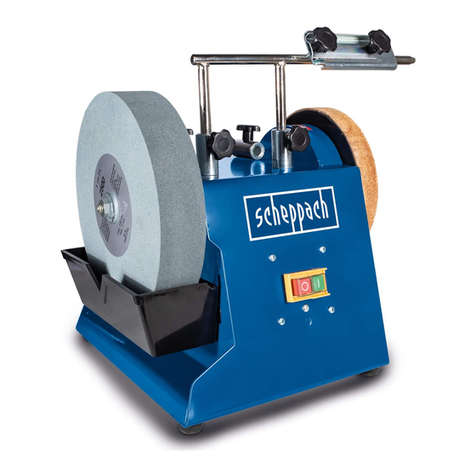
Scheppach
Scheppach TiGer 2000 Series instruction manual
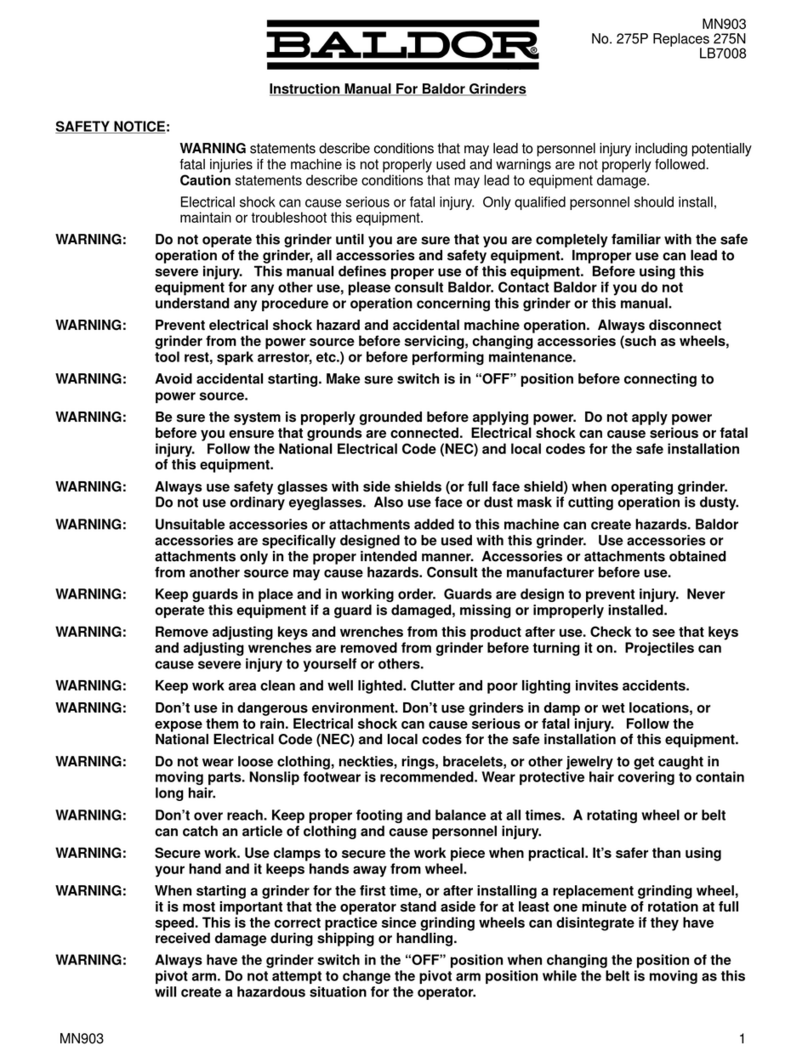
Baldor
Baldor MN903 instruction manual
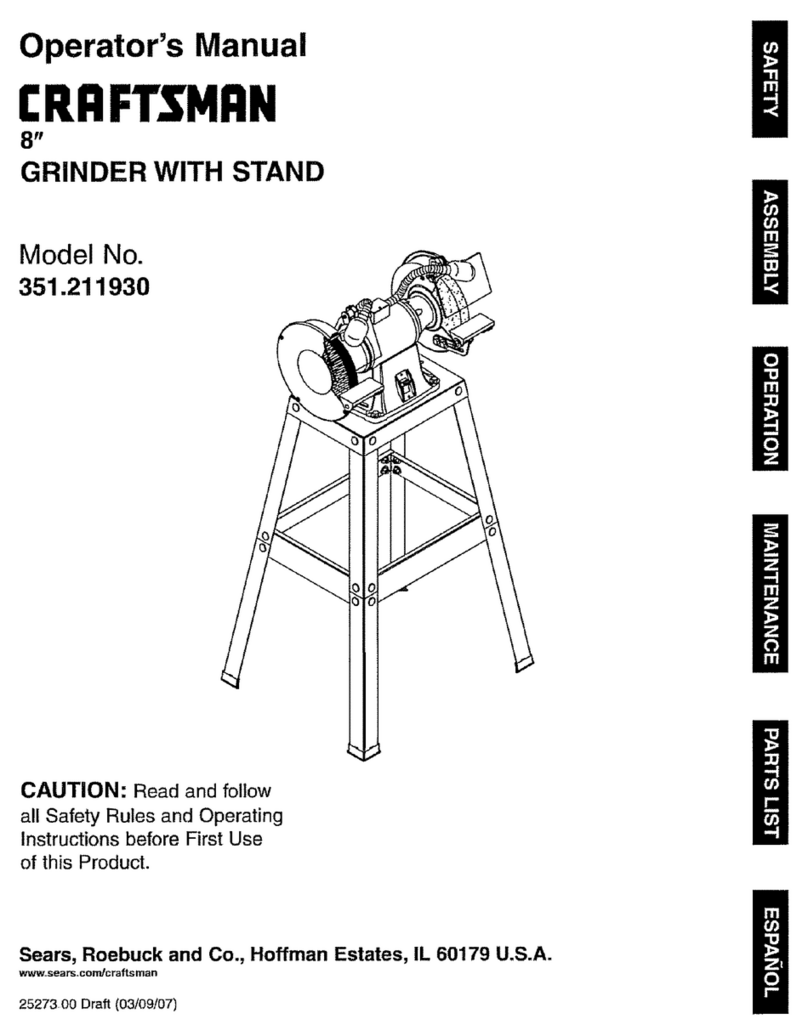
Craftsman
Craftsman 351.211930 Operator's manual
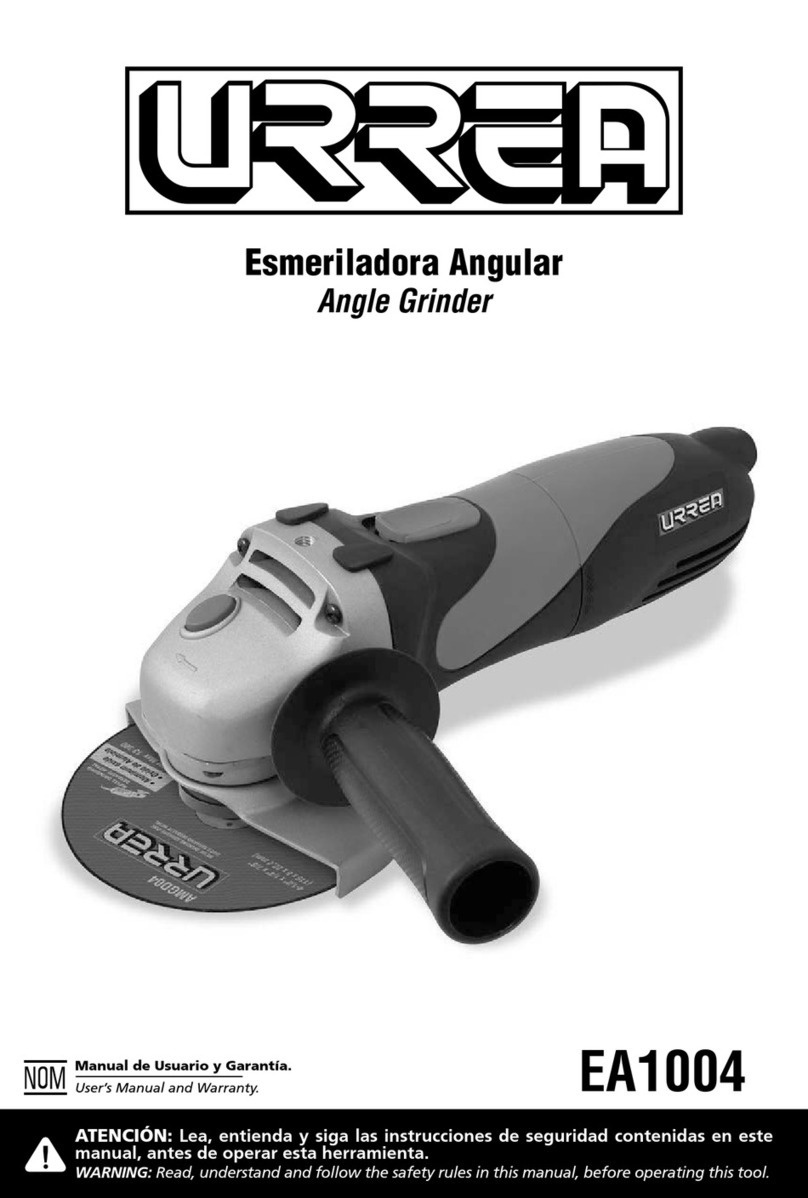
Urrea
Urrea EA1004 User manual and warranty
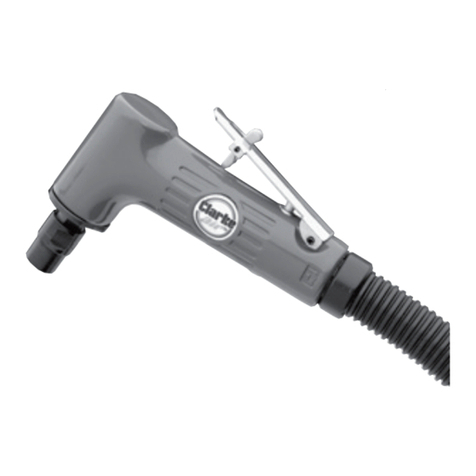
Clarke
Clarke CAT83 Operating & maintenance instructions

Florida Pneumatic
Florida Pneumatic Universal Tool DIE GRINDER Series General Safety Information & Replacement Parts
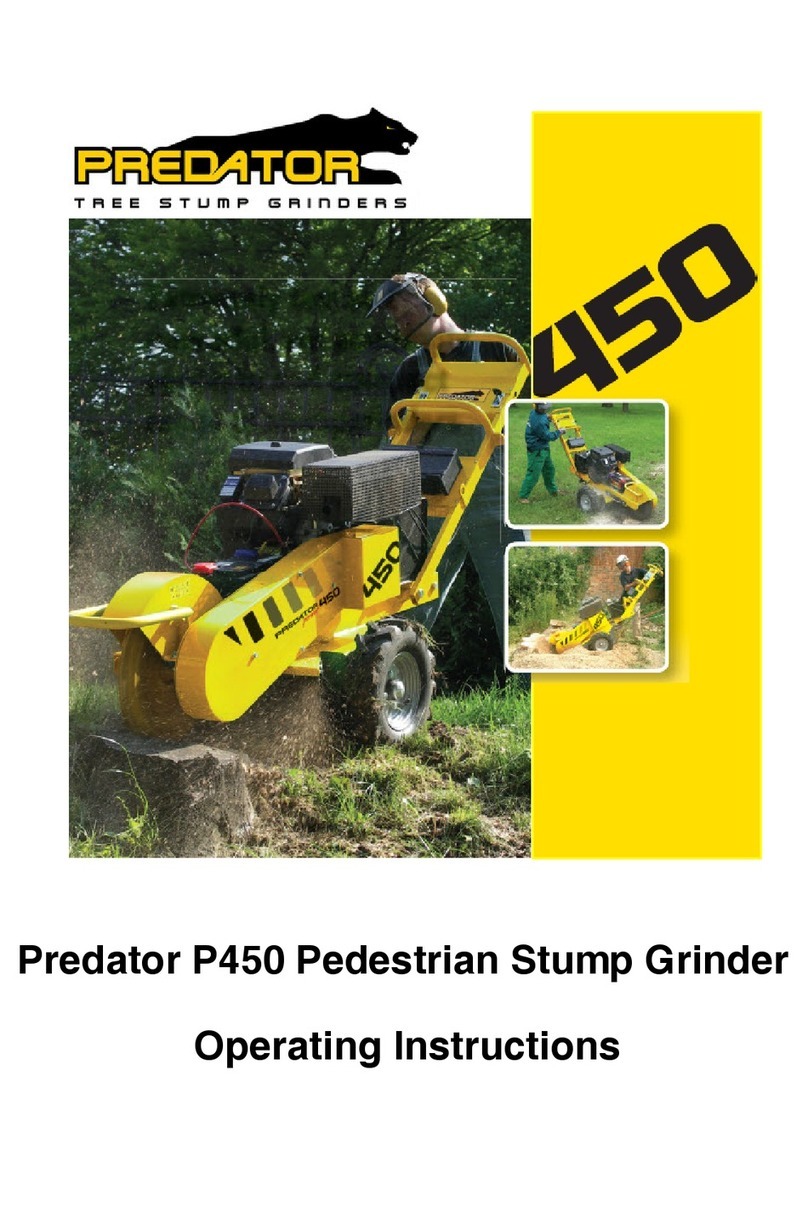
Predator
Predator P450 operating instructions
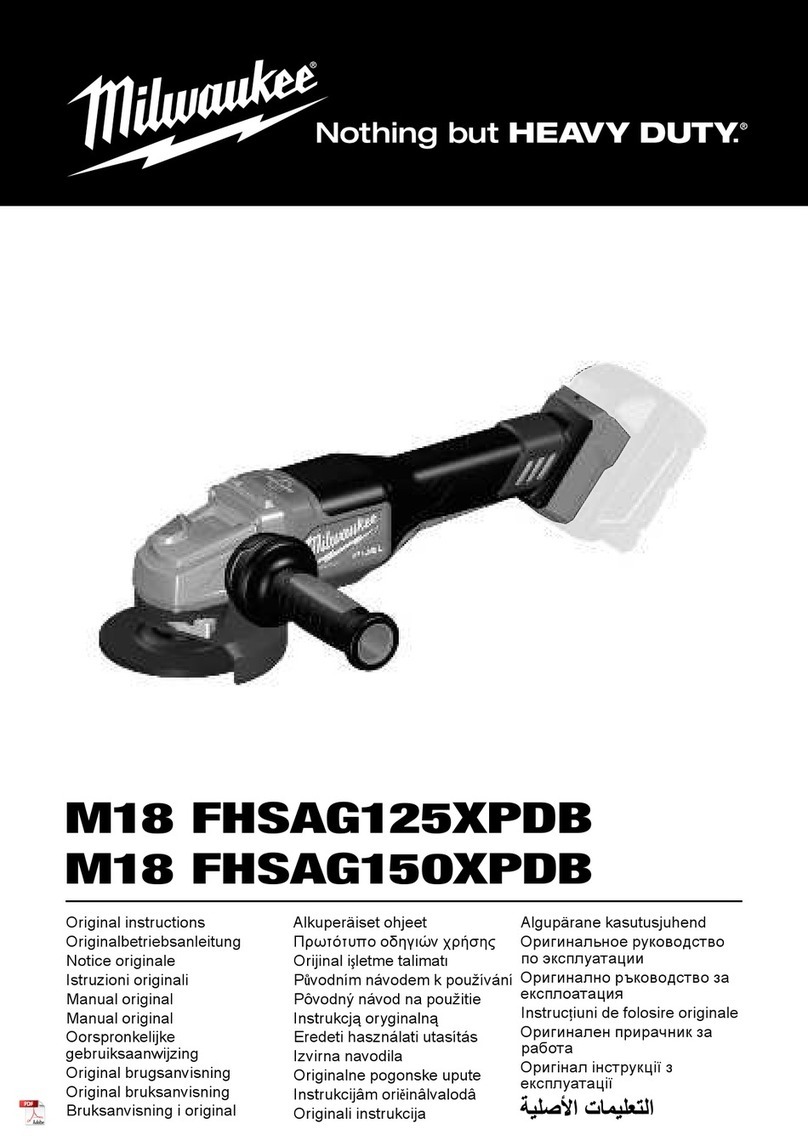
Milwaukee
Milwaukee M18 FHSAG150XPDB Original instructions

USAG
USAG 922 B1 Original instructions

Scheppach
Scheppach HG34 instruction manual
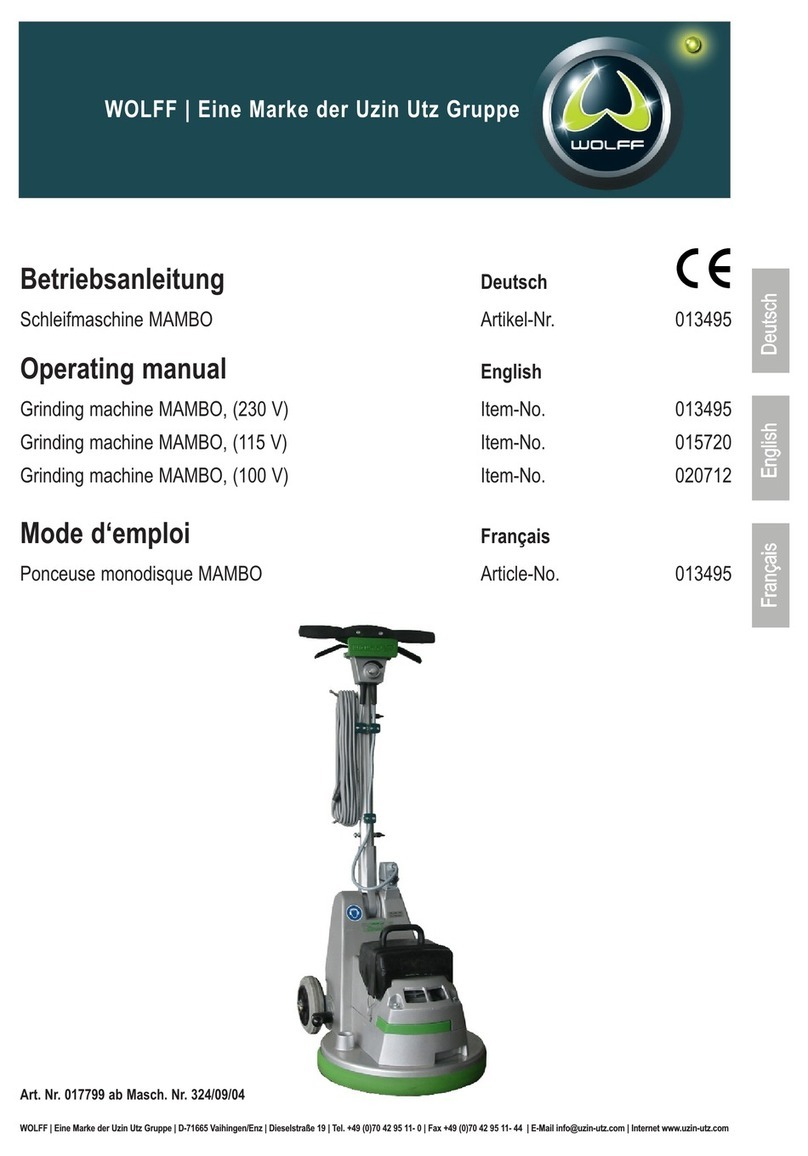
WOLFF
WOLFF MAMBO operating manual
